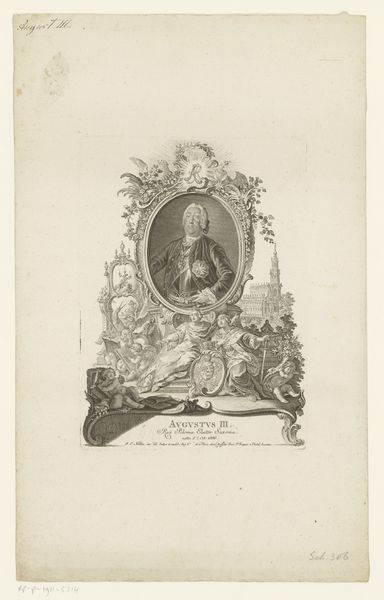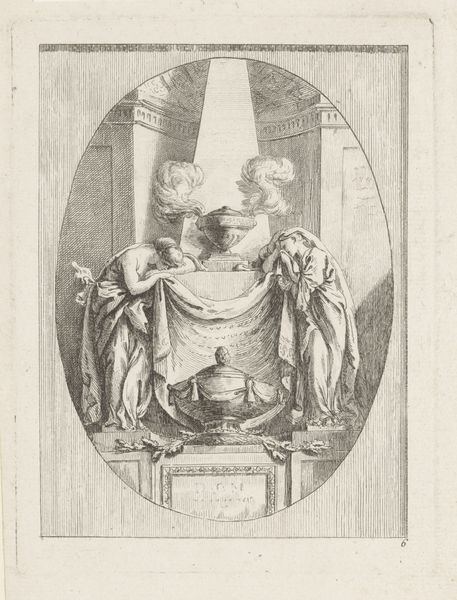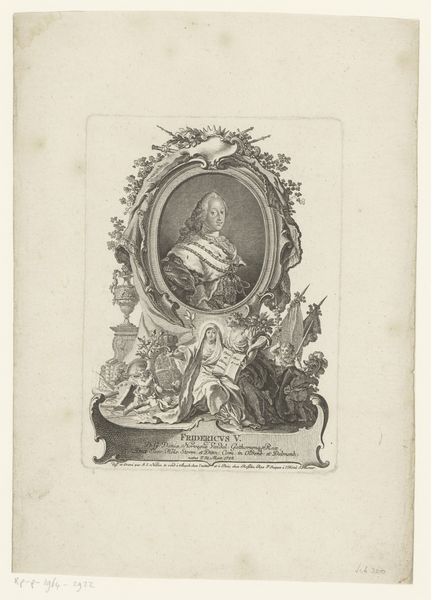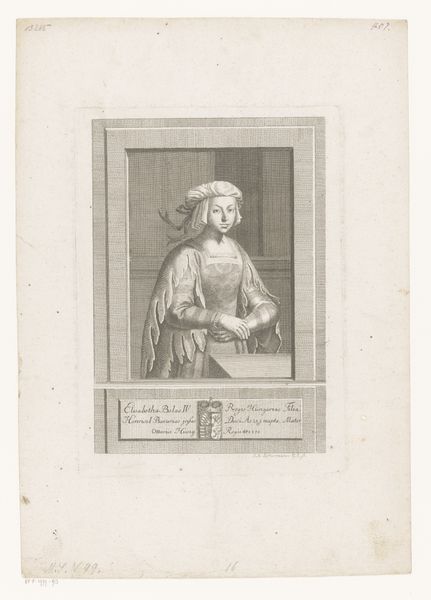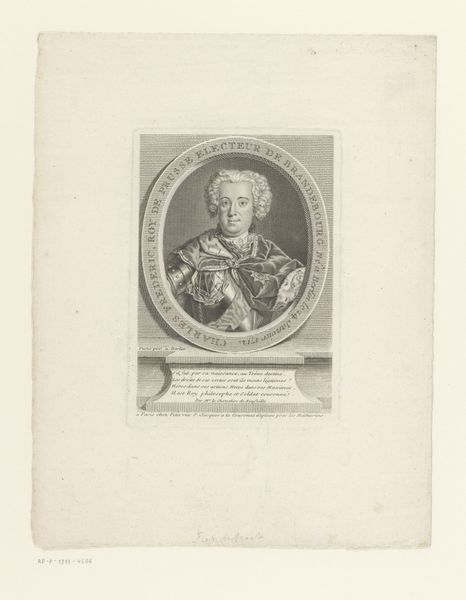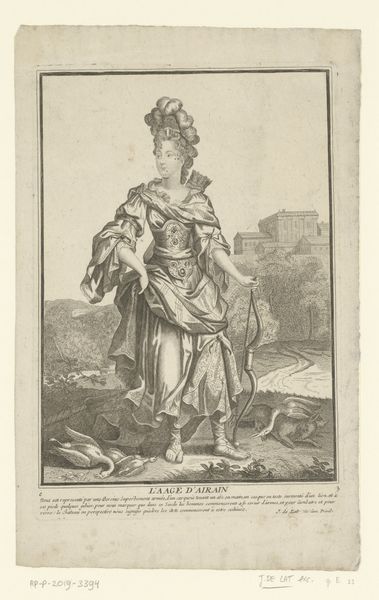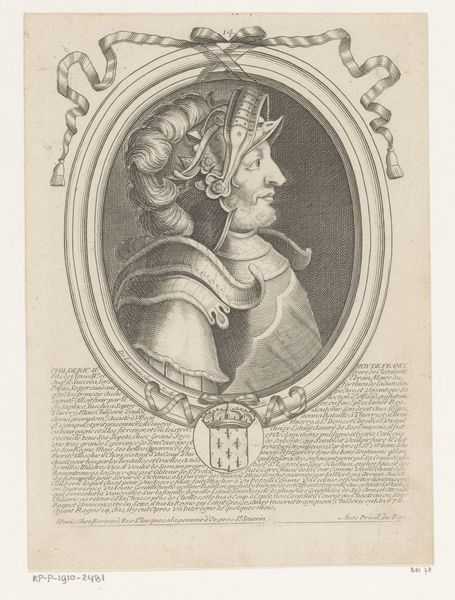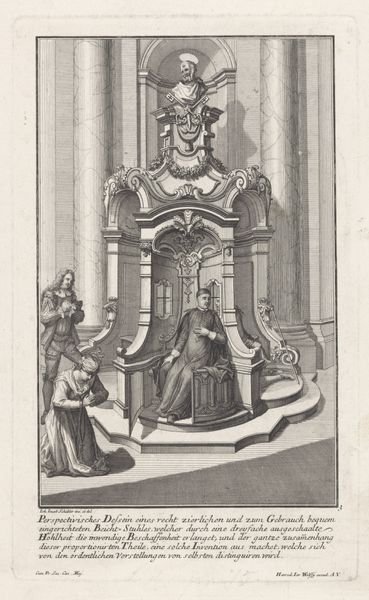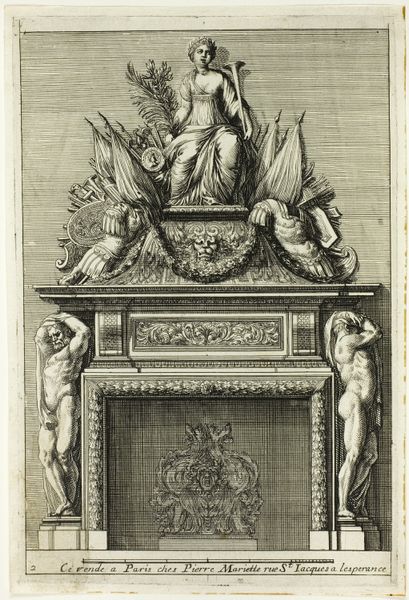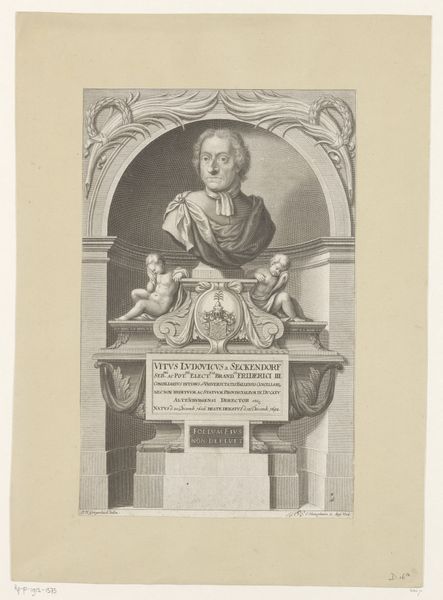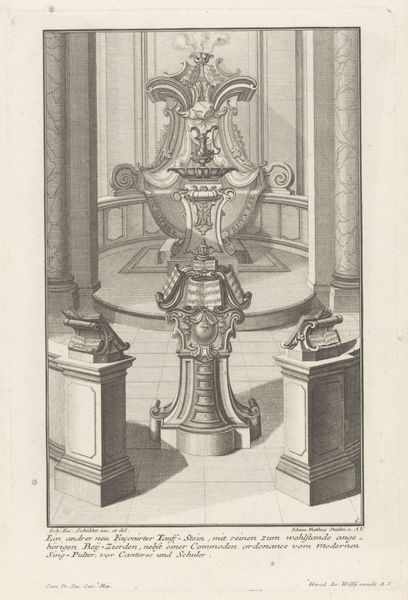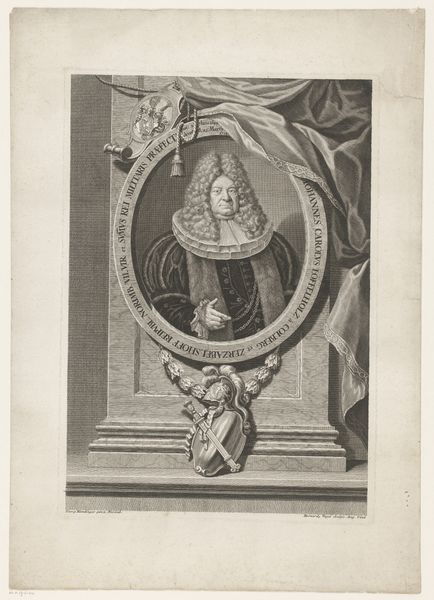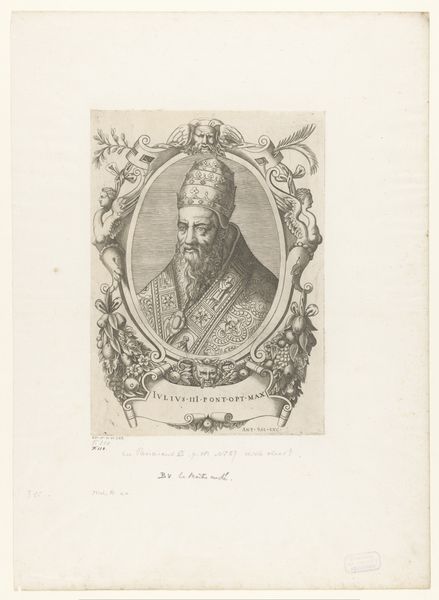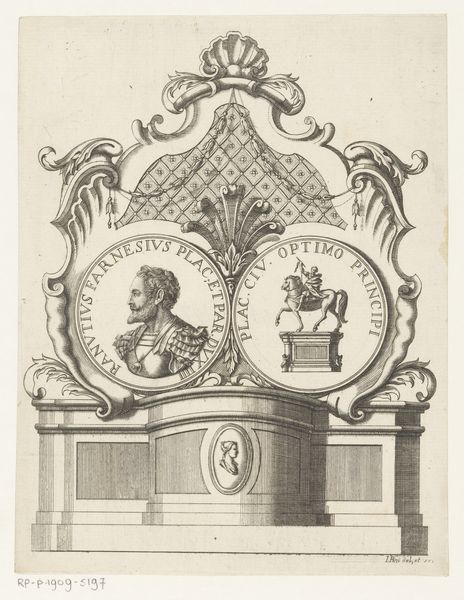
drawing, paper, engraving
#
portrait
#
drawing
#
paper
#
line
#
history-painting
#
northern-renaissance
#
engraving
Dimensions: height 270 mm, width 194 mm
Copyright: Rijks Museum: Open Domain
Editor: Here we have Joseph Anton Zimmermann's "Portret van Mechtild van Nassau," created in 1773, an engraving on paper. It feels incredibly formal, almost stiff, in its depiction. What stands out to you most in this piece? Curator: I’m immediately drawn to the material reality of this print. Think about the labor involved in creating it. Each line is meticulously etched, a testament to Zimmermann's skill but also the hours dedicated to reproducing this image. What impact did printed images like these have on accessibility and distribution? Editor: So you're saying its significance lies less in the subject and more in its reproduction as an object? How did the technique influence the artistic outcome? Curator: Precisely. Consider the social context: prints like this facilitated the dissemination of imagery to a broader audience beyond the elite. It turns the sitter into a reproducible object. The act of engraving, inherently reproducible, democratized access, although relative to contemporary audiences of course. Think about the choices the engraver made. Why choose engraving over other printing methods? Editor: I suppose engraving allowed for finer detail, better capturing the nuances of her clothing and jewelry, reinforcing her status even in reproduction. The paper itself would've been relatively precious, no? Curator: Exactly. The paper, the ink, the tools used – each component represents a conscious choice reflecting material constraints and aesthetic values. Look at the lines - how they define form, light, and texture. Does it differ from that of a painting and how does that contribute to or subtract from the experience of status? Editor: I see now. Looking at it through the lens of its production makes me reconsider what I initially thought was simply a stiff portrait. I hadn’t considered the implications of mass production. Curator: Exactly! It's about understanding the artwork as a product of its time, shaped by material conditions and social forces. We have looked beyond just "high art" to see art produced as a reflection of its historical, material and labor.
Comments
No comments
Be the first to comment and join the conversation on the ultimate creative platform.
